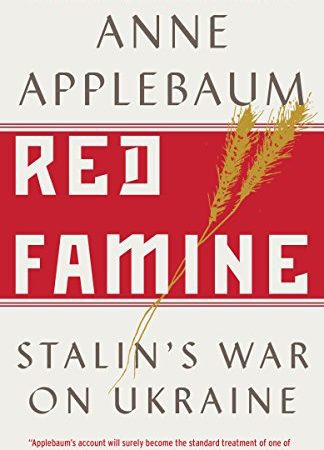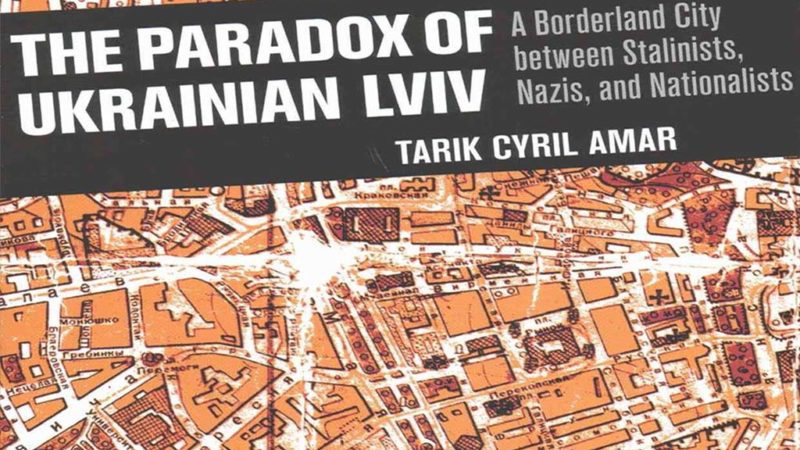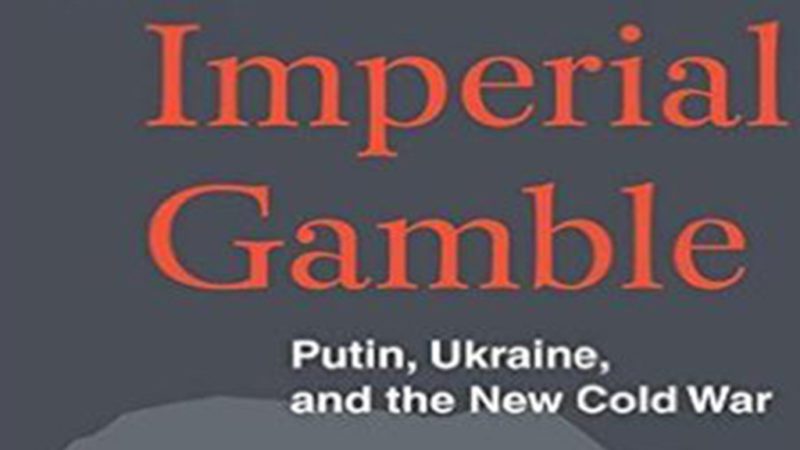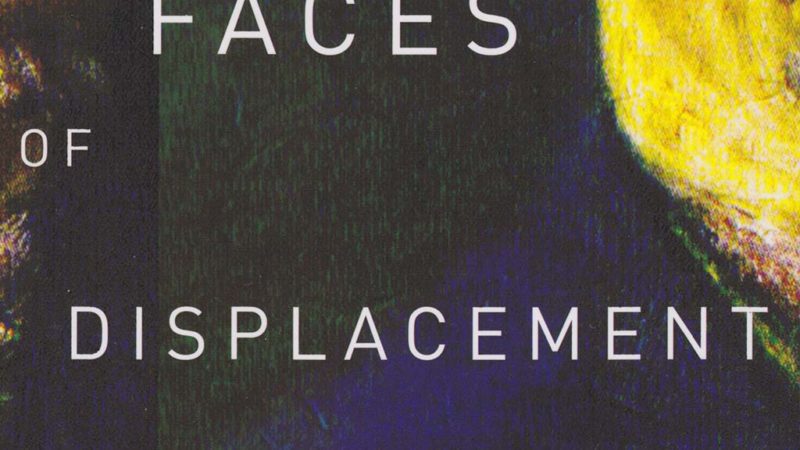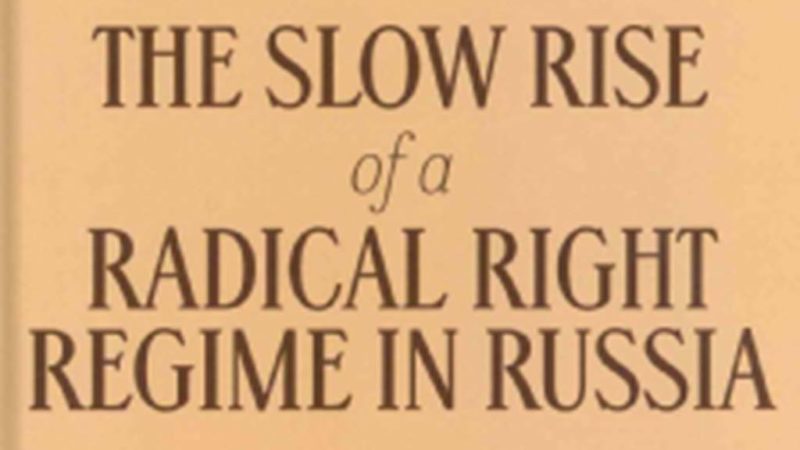Review of Andreas Kappeler. Ungleiche Brüder: Russen und Ukrainer vom Mittelalter bis zur Gegenwart. [Unequal Brothers: Russians and Ukrainians from the Middle Ages to the Present].
![Review of Andreas Kappeler. Ungleiche Brüder: Russen und Ukrainer vom Mittelalter bis zur Gegenwart. [Unequal Brothers: Russians and Ukrainians from the Middle Ages to the Present].](https://ukrainian-studies.ca/wp-content/uploads/2020/04/9_47_kappler_ungleiche_brueder_shop.jpg)
Andreas Kappeler. Ungleiche Brüder: Russen und Ukrainer vom Mittelalter bis zur Gegenwart [Unequal Brothers: Russians and Ukrainians from the Middle Ages to the Present]. Verlag C. H. Beck, 2017. 272 pp. Illustrations. Maps. Notes. Bibliography. Photo Credits. Index of Names.
€16,95, paper.
Andreas Kappeler is probably, at present, the foremost historian of Ukraine writing in the German language. His numerous books and articles address almost every aspect of Ukrainian history, from its very early times, and they also often discuss current historiography and allude to current affairs. Kappeler is both an original thinker and an excellent synthesizer, and the volume treated here, Ungleiche Brüder: Russen und Ukrainer vom Mittelalter bis zur Gegenwart, reflects these two major characteristics. In addition, the book makes several good points about the Ukrainian-Russian relationship (the author is well known for the study of this relationship). The basic thesis is that the relationship between these two “brotherly” peoples, while often close, has generally been asymmetrical and unequal (ungleiche), with the Russians for a very long period treating the Ukrainians as “younger” brothers and as inferior. Kappeler closes his book by saying that this asymmetry is presently disappearing and that both parties are being forced to get used to this new and incontrovertible fact.
Kappeler chronicles the growth of modern ideas of identity in both countries, but only in relation to each other. Thus, Polish-Ukrainian relations, so important for the development of national identity in Ukraine, are completely missing from his narrative, as is the Muscovite-Tatar relationship, which has a similar, and perhaps parallel, significance for Russia. Nevertheless, the Russian-Ukrainian relationship has been predominant for some time, and Kappeler still has much to consider.
Kappeler begins with a historiographic outline of both national traditions; each is marked by the unique contributions of several great historians. He states that modern Russian historiography actually begins with a Ukrainian cleric, Inokentii Gizel’ of Kyiv, whose famous Synopsis (1674), in theory, bound medieval Kyivan Rus’ to Muscovy and to Muscovite history. Then Nikolai Karamzin established the notion of the continuity of state and dynasty from Kyiv to Moscow to Saint Petersburg. Nikolai Ustrialov added that the “Great Russians” and “Little Russians” were actually a single people who had been “reunited” in 1654. Mikhail Pogodin postulated that even the population of Kyiv and its hinterland fled north before the Mongol invasion of the thirteenth century. And finally, the outstanding Russian historians Sergei Solov’ev and Vasilii Kliuchevskii united all of these elements within a single grossen Erzählung ‘Grand Narrative’ of Russian
history. But Kappeler (the European that he definitely is) neglects to add that throughout the Cold War, up until 1991, this narrative was maintained in the West, and especially in the United States, by Russian émigrés, such as Nicholas V. Riasanovsky. And in the form of Riasanovsky’s ponderous but very widely used textbook, this narrative, almost to the present day, has remained de rigueur for nearly all students of Russian and Soviet history.
Kappeler establishes a similar line for Ukrainian history. It begins with the anonymous Istoriia Rusov (History of the Rus’ People) of the early 1800s, which viewed the “Little Russians” of that time as partly separate from the “Great Russians,” and it claimed Kyivan Rus’ for the Little Russian south rather than for the Muscovite north, while at the same time concentrating most thoroughly on the local Cossack heritage. The author of this narrative used the peculiar term Rusy ‘Ruses’ for the people whom we today call ukraintsi ‘Ukrainians.’ Then Mykhailo Maksymovych and Volodymyr Antonovych (both very Kyiv-oriented historians) questioned Pogodin’s theory of population transfer to the north. Mykola Kostomarov synthesized the narrative using the terms velikorusskaia narodnost’ ‘Great Russian nationality’ and iuzhnorusskaia narodnost’ ‘South Russian nationality’ (Dve Russkie narodnosti [Two Rus’ Nationalities], 1861). And Mykhailo Hrushevs’kyi extended this narrative, using the term ukrains’kyi narod ‘Ukrainian people’; he documented this narrative most thoroughly in his great, ten-volume history of Ukraine-Rus’. However, Kappeler, when culminating his narrative, neglects to mention both the interwar émigré historian Dmytro Doroshenko and the Ukrainian historian living in Canada Orest Subtelny. While it is true that Subtelny only published his principal book (Ukraine: A History) as the Cold War was ending, his history is roughly equal and parallel as a fully developed national narrative to the history by the Russian Riasanovsky in the United States.
With regard to early modern history, Kappeler contrasts the Ukrainian Cossacks with the Russian Cossacks. The former, he states, were more internationally oriented, more successful in their revolts, and actually concluded a formal treaty outlining their specific relationship with Moscow. This was something that the Don Cossacks to their east, who were mostly ethnic Russians, never achieved. Thus, in the eighteenth and nineteenth centuries, the Ukrainian heirs of those Ukrainian Cossacks were much better able to make specific claims about their traditional “rights and privileges.” In later times, this included certain “autonomist” claims (which eventually became “independentist” claims). In fact, the eighteenth century, as a whole, was a kind of golden age for the heirs of the old Cossack officer class, which had turned into the new Little Russian nobility. Indeed, as Kappeler points out, the Ukrainians of that time enjoyed great prestige within the Russian Empire because of their country’s traditionally close relations with the West, especially with the Polish-Lithuanian Commonwealth. Ukraine and its inhabitants formed a true window through which the Muscovites could more closely view Western Europe. This was of great import to the then less culturally developed and less distinguished Russians. So, Ukrainian clerics attained high positions in the Russian Church; Ukrainian theology (and perhaps philosophy) were at that time more developed and more sophisticated than the Russian; Ukrainian architecture influenced Russian architecture; Ukrainian statesmen filled the ranks of Russian bureaucracy and government; Ukrainian musicians were significant; and the Cossack officer class was turning into a very important part of the Russian nobility. All of this ended, one might add, quite ironically, when the Poltava native Ivan Paskevych helped conquer the Caucasus for Tsar Nicholas I and, about a half- century later, the Ekaterinoslav native Mikhail (Mykhailo) Rodzianko accepted the abdication of Tsar Nicholas II in a railway car in the midst of the 1917 Revolution.
In the meantime, the new Russian-educated elite labelled the ancestors of present-day Ukrainians as khokhly, malorossy, and mazepintsy. The first of these pejorative nicknames was based on the feature of the common Ukrainian peasants who wore a Cossack-style lock of hair on their otherwise shaven heads; the second referred to educated Ukrainians who were comfortable in the Russian Empire and generally loyal to it; and the third referred to the rebels against Moscow who valued an independent national identity. That identity included a separate past, a different present, and a more self-reliant future. In turn, those varied Ukrainians would sometimes refer to the Russians commonly as moskali and more disparagingly as katsapy ‘billy goats,’ who supposedly wore either long beards or more shortly cropped “goatees,” in contrast with the moustache-favouring Ukrainians.
Although Kappeler does not approach it, the political vocabulary of that time also differed from present-day word usage. Throughout the latter half of the nineteenth and beginning of the twentieth centuries, there were practically no real Ukrainian “nationalists.” In Imperial Russia, first, the “nationalists” were fiery anti-Ukrainian publicists—like the journalist Mikhail Katkov, who dreamed up the theory that the Ukrainian people were an anti-Russian creation of the Polish insurrectionists—and then, second and later on, they were the members of the Club of Russian Nationalists (Klub russkikh natsionalistov), which was very strong in Ukraine and even had its headquarters in Kyiv. In contrast, the forerunners of today’s “Ukrainian nationalists” were then called “Ukrainophiles,” and politically, they were referred to as “autonomists” and “federalists,” but never “nationalists.” A good example of this pertains to the great historian Hrushevs’kyi, who considered himself to be a “Ukrainian” but eschewed the term nationalist, which he always used in a negative sense, usually with regard to extremist Russians or Poles.
Of course, the great revolution of 1917-21 blew this political and social order completely to pieces. Under Hrushevs’kyi and his successors, Ukraine began to openly go its own way. The Russian Empire was replaced by the USSR, and new identities began to replace the older ones. In the 1920s, the Russian imperial identity was officially discouraged, and the groundwork for a new Ukrainian national identity was laid. For the first time, Kappeler says, the Ukrainians were actually recognized as a nation. Although he does not plainly say it, here Kappeler is following in the footsteps of the American historian Richard Pipes and the Toronto historian Paul Robert Magocsi, who long ago postulated that the Ukrainian revolution of 1917-21 was not completely crushed by the Bolsheviks but, rather, that Lenin’s party was in fact forced to yield national elements and a federal structure to its new Communist state, the USSR, and to acknowledge Soviet Ukraine, the largest and most important of the “Union republics,” as a de jure independent republic (even though everyone knew that this was, at best, a classic “legal fiction”). In other words, the Ukrainian SSR was a compromise between the ideals of the Ukrainian revolutionaries and activists who had founded the Ukrainian National Republic of 1917-18 and the quasi-imperial Russian Communists, who always stressed centralizing trends and objectives. And out of the womb of the Ukrainian SSR was born the independent Ukrainian state of 1991, which developed into a true national entity during the political crises of 2004 and 2014 and in the years following. For the Ukrainians, Kappeler concludes, 2014 was the equivalent of 1989 in Eastern Europe. Consequently, today Russia must truly give up its claim of being a “big brother,” or “older brother,” and abjure all claims to its former imperial identity. And although there are still few signs of it, a Russian national identity separate from imperial pretentions must now arise, just as a new Ukrainian national identity forged in the war with Russia that began in 2014 did. Kappeler concludes that “Russia and Ukraine are now [integral] parts of Europe and its history It is once again in our [general European and German national] interest to see that the relations between the two neighbours be improved” (my trans.; 235).
Thomas M. Prymak
University of Toronto
Works Cited
Kostomarov, Nikolai. Dve Russkie narodnosti. 1861. Izbornik, http://litopys.org.ua/kostomar/kos38.htm. Accessed 14 Feb. 2020.
Magocsi, Paul Robert. A History of Ukraine. 1996. U of Toronto P, 2000.
—. A History of Ukraine: The Land and Its Peoples. U of Toronto P, 2010.
Pipes, Richard. The Formation of the Soviet Union: Communism and Nationalism, 1917- 1923. 1954. Revised eds., Harvard UP, 1964-97. Russian Research Center Studies 13.
Riasanovsky, Nicholas V. A History of Russia. 1963. 2nd ed., 1969. 3rd ed., 1977. 4th ed., 1984. 5th ed., 1993. 6th ed., Oxford UP, 2000.
Riasanovsky, Nicholas V., and Mark D. Steinberg. A History of Russia. 7th ed., 2005. 8th ed., 2010. 9th ed., Oxford UP, 2019.
Subtelny, Orest. Ukraine: A History. 1988, 1989-92. 2nd ed., 1994, 1998. 3rd ed., U of Toronto P / Canadian Institute of Ukrainian Studies, 2000, 2005. 4th ed., U of Toronto P, 2009.
Republished from: Vol. 7 No. 1 (2020): EAST/WEST: JOURNAL OF UKRAINIAN STUDIES (ISSN 2292-7956)
